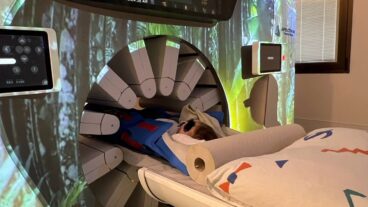By 2020 robots may be meeting our rehabilitation needs – psychological, physical and more – says a world expert speaking at a recent conference in Israel.
By 2020, occupational, physical, psychological and behavioral rehabilitation will be carried out by robots in our own homes, according to Professor Grigore Burdea speaking at the Virtual Rehabilitation 2009 International Conference in Israel this month.
And they won’t just stop there, Burdea told delegates from Israel and around the world. The robots will also do the cooking, cleaning, dressing and other household chores.
“The future is in low-cost, patient-based devices that will enable the patient to receive continuously tailored therapy from home,” he said. Burdea, a pioneer in the field of virtual rehabilitation and director of the Rutgers Tele-Rehabilitation Institute in New Jersey in the US, was one of many speakers at the conference hosted by the University of Haifa.
Multiple therapies, one robot
He predicts that in the near future we will see various aspects of therapy coming together. Instead of a slew of therapists treating each patient, there will one therapist regulating the inclusive virtual application of therapies tailored to each specific patient.
He explains that the technologies that will enable this scenario are likely to come in the form of robotics – a robot that can do everything in the home of a patient, from cooking and cleaning, to providing therapy specifically suited to the patient’s individual and changing rehabilitation needs.
“A patient might often feel more at ease talking to a robot, and in the comfort of the home and not in a hospital or clinic,” said Burdea. “Cloud rehabilitation,” a term coined by Burdea, will also play a major role in future interactive virtual rehabilitation enhancement.
We’ll still need human therapists
Use of cloud computing technology will facilitate real-time data processing, as it enables us to record on remote servers the rehabilitation processes taking place in a patient’s home.
That makes the information accessible to remote therapists who can then provide analysis and feedback. He emphasizes, however, that technology is meant to augment, not to replace, therapists.
The future technology will avoid the risks inherent in the use of today’s virtual reality games for rehabilitation, Burdea explains. The Wii and Xbox, for example, have already been adopted by therapists but are not suitable for unassisted patient use because they may cause elevated blood pressure or loss of balance.
However, the game-based concept will certainly remain, because it provides motivation and makes it fun to achieve goals.












